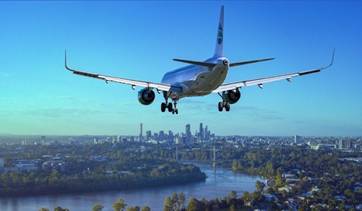Why COPD Sufferers Should Watch Out for Altitude Sickness
 People living with chronic obstructive pulmonary disease (COPD) had to be careful when flying long before the COVID-19 pandemic was declared in March. Breathing at higher elevations can be difficult for COPD sufferers because your body needs to work harder to take in the same amount of oxygen as it does at elevations closer to sea level. This strains your lungs.
People living with chronic obstructive pulmonary disease (COPD) had to be careful when flying long before the COVID-19 pandemic was declared in March. Breathing at higher elevations can be difficult for COPD sufferers because your body needs to work harder to take in the same amount of oxygen as it does at elevations closer to sea level. This strains your lungs.
Depending on the severity of your COPD, you may need to supplement breathing with oxygen to prevent oxygen deficiency—especially if you’re climbing to more than 5,000 feet. According to a paper published by the Aerospace Medical Association, the standard air pressure on a commercial flight is the equivalent to being 5,000-8,000 feet above sea level. (If you’re bringing additional oxygen, make sure to call the airline beforehand.)
Altitude sickness—also known as acute mountain sickness—can develop when adjusting to higher elevations. And while it can affect anyone, altitude sickness can be severe in those who have COPD or other lung conditions. Early symptoms can include:
- Shortness of breath
- Dizziness
- Fatigue
- Feeling lightheaded
- Headache
- Nausea
- Vomiting
- Rapid pulse or heartbeat
Read the whole story on the effect higher elevations have on people with COPD.

